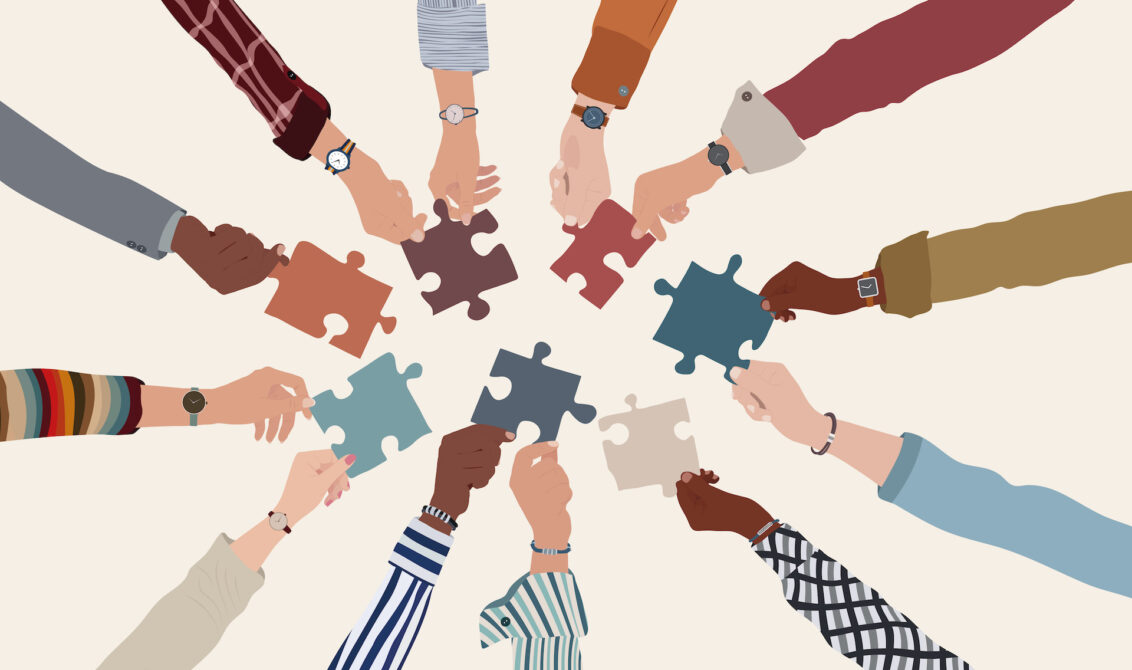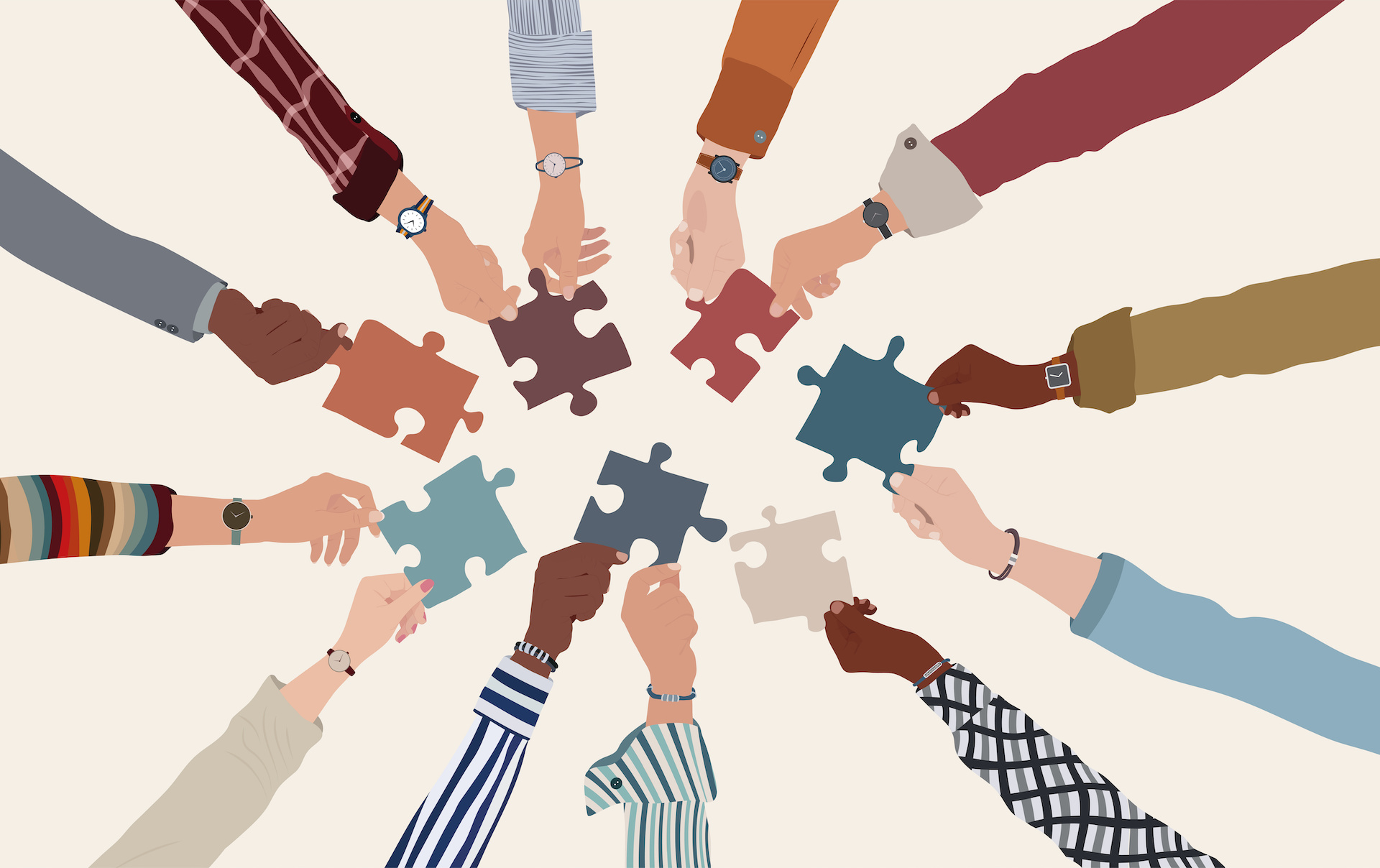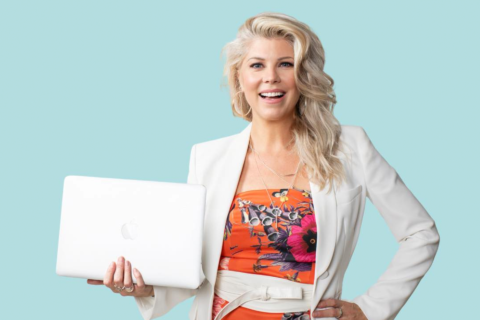Future-fit organizations want to thrive today and adapt quickly to the needs of tomorrow. They’re committed to keeping employees of all races, cultures, genders, orientations, and experiences happy and engaged. They know focusing on people—and helping them thrive—is the key to staying relevant and profitable for the long haul.
Amri B. Johnson says diversity, equity, and inclusion (DEI) are non-negotiables for any business that wants to stand the test of time. But here’s the caveat: They shouldn’t let a focus on what divides us overshadow the humanity that unites us.
“Research shows that diverse organizations are more successful at attracting and retaining talent, making high-quality decisions, and pursuing successful innovation. But the value of diversity is only fully captured when an organization is equitable and inclusive—when systems, leaders, and peers foster a welcoming and fair environment for all—ensuring no opportunity, talent, or potential is missed.” McKinsey & Company
“Today’s employees, especially Millennials and Generation Zers, demand inclusion,” says Johnson, author of the new book Reconstructing Inclusion: Making DEI Accessible, Actionable, and Sustainable. “They want organizations to prioritize building human-centric environments that value and uplift all workers.
“However,…leaders must address DEI in a way that’s authentic and centered on our shared humanity,” he adds. “Nothing performative or cosmetic will stand the test of time.”
Read on for three “must-haves” for brands that want to outlast the competition.
Replace ‘us and them’ with ‘we’
No one wants to feel othered, but focusing on single identities as the basis of your inclusion work only perpetuates the othering cycle, says Johnson. Support those employees who have been marginalized in the past. Recognize that everyone—all races, genders, orientations, and ability levels—should be empowered to become their best selves and reach their potential at work.
“If there’s one thing the future-fit organization needs to remember, it’s that we can all have our affinities and choose humanity,” notes Johnson. “They’re not in conflict or competition. Any tension that might arise is an opportunity to grow and create something extraordinary together.”
Give everyone opportunities to grow
Meritocratic-oriented systems are not as fair as they might seem at first glance. In fact, they can be harmful to an organization’s most vulnerable employees. Why? Because the “best” people who rise to the top have often had more opportunities than those who have historically been underexposed to things that some might take for granted. Johnson asserts that top performers are not the only people who deserve to thrive at work. And those whom we identify as “top performers” often benefit from being part of in-groups where they have had greater access to information, emerging insights, or power
“Meritocracy’s myth resides in the erroneous notion that someone who has historically been advantaged is inherently more advanced than someone with less advantage,” he says. “Future-fit organizations give everyone the opportunity to develop and grow.”
Design an inclusion system for a complex world
It is possible for everyone to win and thrive across their differences, says Johnson. Yet we must understand that the world is far more ambiguous and complex than ever before—and we must design Inclusion Systems that allow us to make sense of and navigate this ambiguity and complexity.
“I work with clients to create the conditions critical to inclusion’s becoming normative—accessible, actionable, sustainable, and positively contributing to the larger mission,” says Johnson. “The idea is to help organizations to solve existing problems while continually adapting to whatever new challenges or goals arise in the organization over time.”
Of course, these steps are just the beginning. The work of DEI is never truly finished. The good news is it’s the right thing to do for your employees and for your bottom line.
“Helping employees find career satisfaction and belonging is one of the best ways to help them deeply engage in their work and adapt to incessant change,” concludes Johnson. “When you ensure employees have all they need to unite and collaborate, you are also safeguarding the future of your organization. And together, you can make your shared vision a reality for years to come.”
Amri B. Johnson is the author of Reconstructing Inclusion: Making DEI Accessible, Actionable, and Sustainable. For more than 20 years, he has been instrumental in helping organizations and their people create extraordinary business outcomes. He is a social capitalist, epidemiologist, entrepreneur, and inclusion strategist. As CEO/founder of Inclusion Wins, Amri and a virtual collective of partners converge on organizational purpose to create global impact with a lens of inclusion. Born in Topeka, Kansas (USA), Amri has worked and lived in the US, and Brazil, and currently lives in Basel, Switzerland, with his wife, Martina, and their three kids. Learn more at inclusionwins.com.
© YFS Magazine. All Rights Reserved. Copying prohibited. All material is protected by U.S. and international copyright laws. Unauthorized reproduction or distribution of this material is prohibited. Sharing of this material under Attribution-NonCommercial-NoDerivatives 4.0 International terms, listed here, is permitted.














